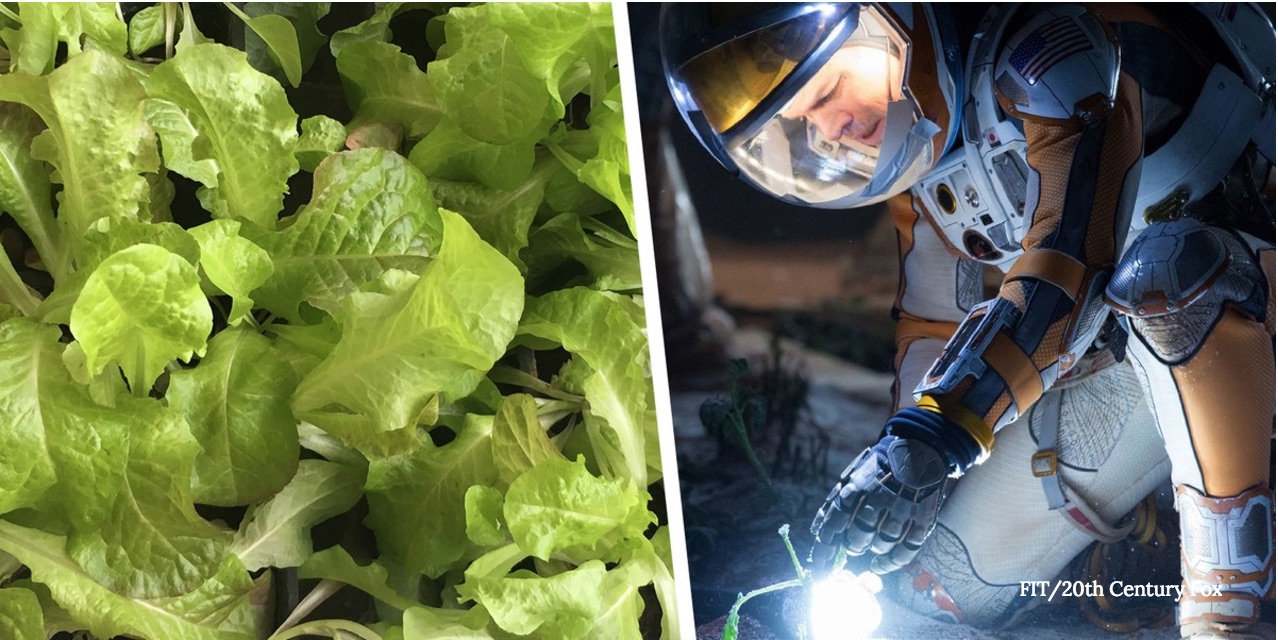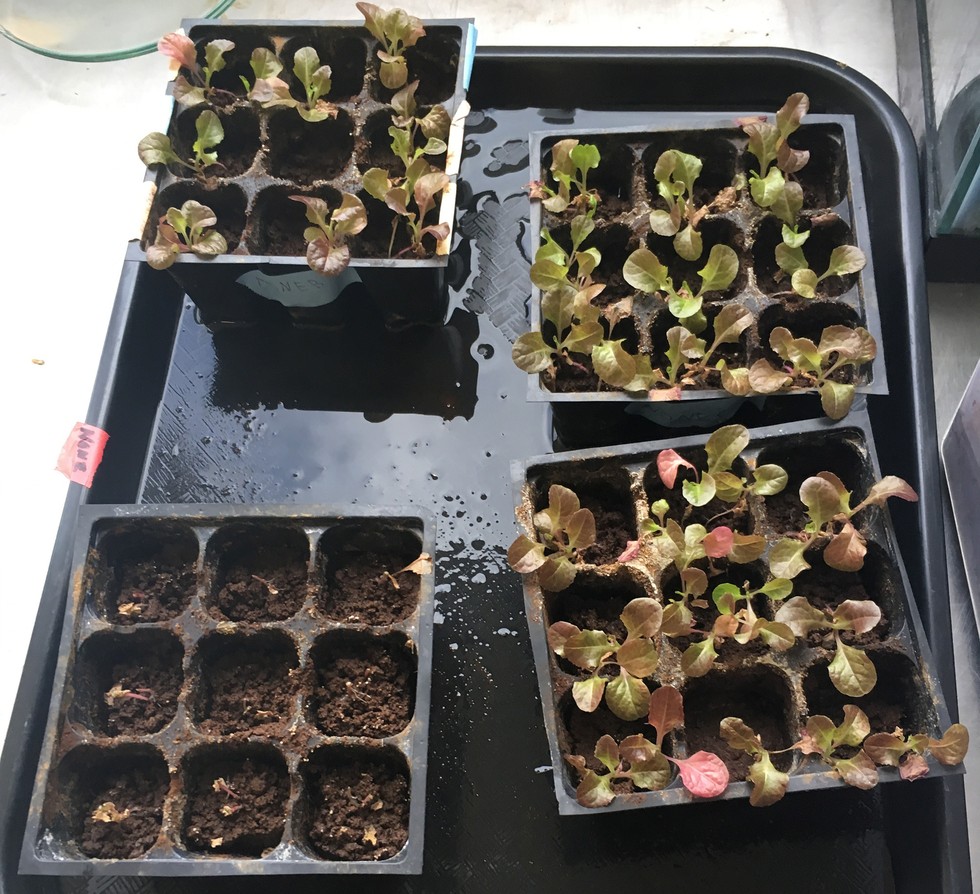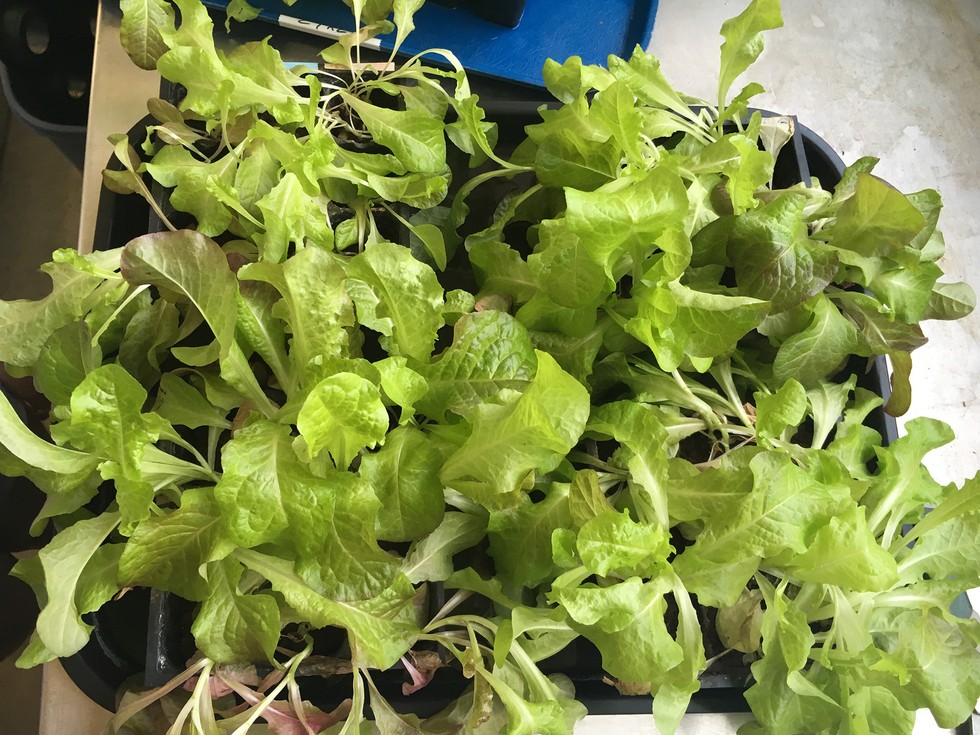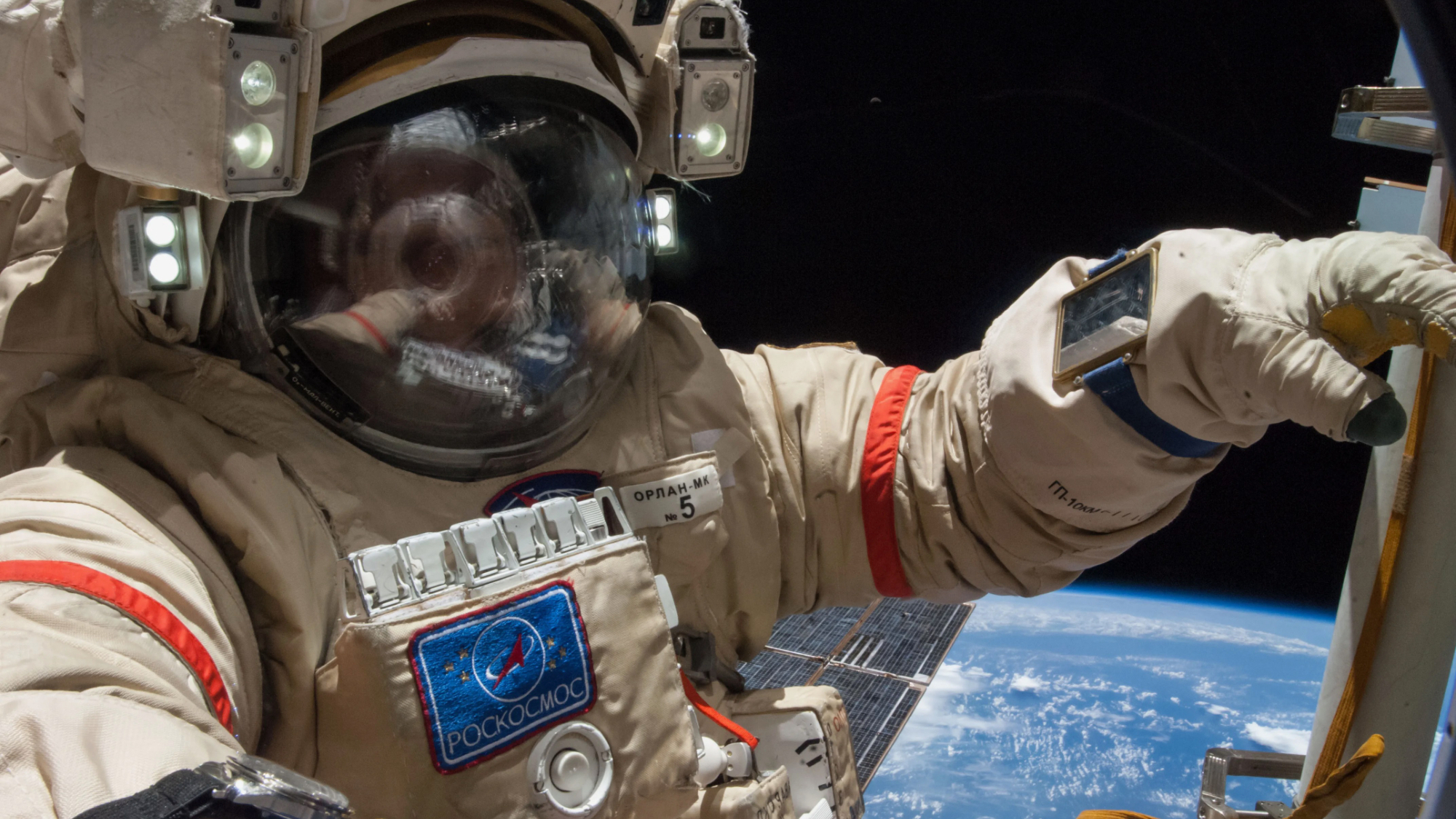Here's How Extraterrestrial Farming Will Work on Mars

Landing humans on Mars would be a momentous event in human history. To live beyond Earth's biosphere is a dream to many, but establishing a sustainable presence on the Red Planet will require mastering its environment. We would need to devise ways of producing food where none exists, because depending on supplies from Earth would neither be sustainable or practical.
In the 2015 blockbuster movie "The Martian," Mark Watney (Matt Damon) is famously depicted planting potatoes in a makeshift greenhouse after getting stranded on Mars during an epic storm that forced the rest of his crew to abandon their mission. Using vacuum-packed potatoes from the mission's base, Watney planted them using the planet's "soil," produced water from chemical reactions and fertilized his burgeoning potato crop with the crew's freeze-dried poop.
It seems like a pretty straightforward method of cultivating plants on Mars — but deceptively so.
"It's nowhere near that easy," Ralph Fritsche, senior project manager for food production at NASA's Kennedy Space Center, told Seeker.
NASA plans to send astronauts to Mars by the 2030s, and Elon Musk's SpaceX has proposed an aggressive Mars colonization effort based on the Interplanetary Transport System (ITS). But while SpaceX may have the expertise to transport people to Mars, there is no consideration as to how they might stay there and "live off the land" to produce food.
RELATED: The Martian Winds WON'T Blow You Away
Considering that it would cost an estimated $1 billion per person per year just to send food from Earth to Mars, it quickly becomes clear that we need another plan for feeding future Mars explorers.
Breaking space news, the latest updates on rocket launches, skywatching events and more!
"Elon Musk has presented the world with a challenge," said Daniel Batcheldor, professor of physics and space sciences at the Florida Institute of Technology and project lead for the Buzz Aldrin Space Institute. "Right now, we know that we cannot deliver the mass needed to the surface of Mars purely from stuff sent from Earth. We have to create a sustainable colony on Mars that is not dependent on resupplies from Earth."
Whether we're thinking about setting up our first Mars colony or supporting a small team of NASA astronauts, researchers are currently developing novel strategies for growing plants beyond Earth.
Fritsche and his NASA colleague Trent Smith have teamed up with scientists at the Buzz Aldrin Space Institute to investigate how we might really grow food on Mars. Though using astronauts' physical waste for fertilizer might play a role, everything from toxin removal to "designer bacteria" will be needed to create a Martian version of the soil that we take for granted here on Earth.
"There shouldn't be any organic matter in Mars regolith" — powdered rock on the planet's surface from eons of meteorite impacts — "and, in order to recycle the nutrients, you need to have decomposers to break down what's there to make it available, in the right form, for plants to use," said assistant professor Brooke Wheeler, of Florida Tech's College of Aeronautics. "That would be one potential strategy of making a colony more sustainable to recycle waste, whether that's human waste or leftover food for composting, or any other [organic] waste products to help build that into the design of the habitat."
RELATED: Musk: This Is How SpaceX Will Explore Mars and Beyond
Wheeler and her colleague Drew Palmer, an assistant professor of biological sciences at Florida Tech, are using a Mars regolith simulant in hopes of investigating how we might use native resources when we eventually land a human mission on Mars. The simulant, which is essentially powdered volcanic rock from Hawaii, contains none of the nutrients necessary for plants to grow, but it's the closest thing we have to approximating Martian regolith.
Though the regolith simulant is a good start, Wheeler and Palmer are realistic about its limitations. One of the biggest challenges is how future Mars astronauts will "remediate" the regolith of toxic chemicals that are known to be present on the planet. As confirmed by NASA's Mars Science Laboratory Curiosity, Martian regolith is packed with salts called perchlorates, which are used in industrial processes on Earth and are known to trigger serious thyroid problems. The removal of perchlorates from Mars regolith is essential to making the plentiful resource appropriate for agriculture on Mars.
"One of the things we're keenly interested in is when we start to introduce microbes, we'd like to use engineered microbes that could eliminate things like the toxic perchlorates that will be in a lot of the soil," said Palmer. "You can engineer bacteria now, already on Earth, to do that."
But it doesn't stop there. As Mars doesn't have the soil microbes that form the backbone of the vital cycles that drive Earth's biosphere, we will need to introduce the bacteria and strategic plant life to the Martian regolith to ensure the plants receive the necessary nutrients.
"We believe that, in the long term, by reincorporating the microbes and organisms that co-exist with plants [on Earth] will be able to create sustainable nitrogen and phosphorus cycles [on Mars]," said Palmer.
The raw material behind these cycles is fertilizer, so when planning Mars agriculture, we need to consider how that will be sourced. Will it be shipped from Earth? Or will it be produced on site to reduce cost and the dependence on Earth?
"That's just more structures you have to build to supplement this [system]," Palmer added.
RELATED: The Incredible Short History of Plants in Space
The researchers suggest that before a human even sets foot on Mars, a robotic mission could land months in advance with the sole purpose of preparing the Martian regolith for agriculture. Farm bots could extract the regolith and perform perchlorate remediation tasks while introducing the necessary biology to set up the cycles necessary for plant life to thrive. The idea is to establish a viable Mars farm ahead of a human mission that's ready for the astronauts to take over as soon as they land. Not only will there be fresh food waiting for them in their habs, but such a farm could also be supplementing life support systems with oxygen while regulating toxins in the air.
The challenges of producing food on Mars are rich and varied, but one of the biggest benefits of physically growing plants on Mars would be a psychological one. As the project lead for the International Space Station's "Veggie" experiment — which uses hydroponics to supply plants with the necessary water and nutrients in a microgravity environment Trent Smith realized that the astronauts on the orbiting outpost took great joy in growing plants on an otherwise sterile environment away from home.
"Because they're on the space station, in a really hostile environment, with all these wires and cables and metal and plastic... when they have these little growing plants that they care for, it's their little piece of home, their little piece of nature," Smith remarked. "When we go to Mars, this is going to become really important."
The Veggie demonstration system famously produced lettuce that was consumed by NASA astronaut Scott Kelly during his year-long mission aboard the space station with Russian cosmonaut Mikhail Kornienko, but it cannot sustain astronauts in orbit alone — they remain wholly dependent on Earth for food. Though hydroponics will likely have a role to play in supplementing the diets of Mars explorers, we will ultimately need to depend on the resources the Red Planet has on offer to create and maintain a sustainable presence.
RELATED: The Martian: Science vs. Fiction
"Initially, as we go for months at a time, we might just do hydroponic farming… hydroponics are incredibly efficient," Smith noted. "But if you're going for an extended amount of time, then it makes sense to switch over to a regolith-farming system. You'll have these two different ways to grow plants for food."
Whichever way you look at it, we will need to use our technological prowess to re-learn how to farm in an inhospitable environment.
"It will basically be like going back to an early agrarian society, when we were learning how to farm the earth," said Batcheldor. "But instead of using fertile soil, we've basically got to make the soil on Mars."
"Establishing a permanent colony on Mars is going to be the ultimate act of sustainability for humanity," he added.
Originally published on Seeker.
Join our Space Forums to keep talking space on the latest missions, night sky and more! And if you have a news tip, correction or comment, let us know at: community@space.com.
Ian O'Neill is a media relations specialist at NASA's Jet Propulsion Laboratory (JPL) in Southern California. Prior to joining JPL, he served as editor for the Astronomical Society of the Pacific‘s Mercury magazine and Mercury Online and contributed articles to a number of other publications, including Space.com, Space.com, Live Science, HISTORY.com, Scientific American. Ian holds a Ph.D in solar physics and a master's degree in planetary and space physics.


